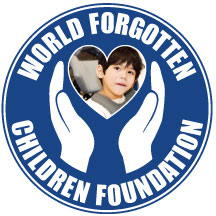
On April 10, an article appeared in the Washington Post titled “Despite a decades-long effort, babies are still dying of SIDS.” The article by Marlene Cimons traces back the effort to the Safe to Sleep campaign, which was launched in 1994, and urged people to place babies on their back when they are putting them to bed and to make sure that the crib is free of anything soft that night risk infant suffocation, such as pillow, blankets or stuffed toys. In the years following that campaign, the cases of sudden infant death syndrome (SIDS) fell by more than 50 percent, but the decline has stopped.
In the United States, around 3,400 infants under the age of 1 die suddenly every year. Of these deaths, the number actually attributed to SIDS is likely to be an undercount, experts say. Upon finding a baby unresponsive, parents take the baby in for unstandardized autopsies that sometimes result in misclassification. Fern Hauck, an associate professor of family medicine and public health sciences at the University of Virginia School of Medicine and a SIDS researcher has tried to bring attention to this issue. “The [SIDS] rates have been totally stagnant for the past 20 years,” said Dr. Hauck, “I think it’s important that public health professionals be aware that these numbers are not going down.” Experts have said that the solution lies in educating new parents and reinforcing the safe sleep messaging that they have been advocating for years. Experts have also suggested that it may be worthwhile to look into physiological factors that may impact an infant’s ability to wake up when they are struggling to breathe. These factors can include different genetics or some unknown brain abnormality (Source: Washington Post).
Though most cases of death are obvious, the term SIDS exists to describe unexpected infant deaths. However, the U.S. forensic medical community, which includes medical examiners and coroners, refer to these deaths as unknown or undetermined. Due to the different terminology used by the forensic medical community, the number of actual SIDS deaths is not represented and may lead people to think that there are less SIDS cases than there actually are. “SIDS is underestimated,” Hauck says. “It is not vanishing. They just changed the name.” That’s why even the Centers of Disease Control and Prevention uses separate statistics for SIDS and “unknown” case categories in graphics. “If you just look at death certificates that say SIDS, they have gone down dramatically, but the reality is that many deaths that aren’t labeled SIDS would have been considered SIDS prior to 1992,” said Carl Hunt, research professor of pediatrics at the F. Edward Hébert School of Medicine of the Uniformed Services University in Bethesda, Md., and board chair of the American SIDS Institute. “They now have become part of the overall larger number of [unknown cause] deaths” (Source: Washington Post).
Therefore, it has become paramount to reemphasize safe sleeping advice and learn why people might have stopped following it. Dr. Hauck has started creating short videos for hospitals so that doctors can share them with parents. In addition to the advice stated in the 1994 campaign, experts are urging parents to also avoid bed sharing and smoking during pregnancy and around the infant. Breastfeeding (and having the baby always sleep in the crib afterward), giving the child a pacifier (but not on a string or cord) and keeping the crib in the parents’ room are measures that the American SIDS Institute have said will reduce the risk of SIDS. However, Dr. Hauck says that sleep-deprived parents are likely to ignore the advice. “People make decisions in the middle of the night when the baby is screaming, and they are exhausted,” she says. “So they will take the baby to bed with them or put them on their stomach because maybe they heard from a friend that this will quiet the baby. If a baby is put on their stomach for the first time, they are more likely to die. They aren’t used to being in that position, so if they get into trouble, their brain doesn’t tell them to respond properly” (Source: Washington Post).
Also, Marion Koso-Thomas, a program scientist with the Eunice Kennedy Shriver National Institute of Child Health and Human Development's global network for women’s and children’s health research, emphasized that the Internet is full of misinformation about a variety of unsafe sleep products and ineffective monitoring devices. “We have new generations of parents who go online and see sites with new devices, such as bumpers, and they think: ‘This is cool, I’m going to try it with my baby.’ And it might not be safe,” she says. “With social media, they have a whole new world to get information from, and some of it is alarming.” Culture has also played a big role in some parents still believing in traditional, outdated practices. Koso-Thomas says that caregivers and grandparents influence a lot of the decisions made by parents, and pediatricians must be assertive about safe sleep information (Source: Washington Post).
Future goals also include identifying vulnerable infants early on based on physiological factors. Hunt says that it is known that there is currently a familiar risk, as in parents who have had a baby die are at a greater risk for having another. Many genetic studies are pointing to the brain stem as being a big player, as it is the area of the brain that controls automatic functions, such as heart rate, which affects arousal- the final protection that appears to not work normally in infants who die suddenly. Other studies have seen identified genetic variation among SIDS deaths relating to cardiac, respiratory and neurological function. Researchers now believe that the cause of death is due to a failure of arousal (Source: Washington Post).
“I put a healthy baby to sleep in the prone [stomach] position, and it starts to rebreathe” the air it has exhaled, says Jan-Marino (Nino) Ramirez, director of the Center for Integrative Brain Research at Seattle Children’s Hospital, who studies SIDS and brain function. “Carbon dioxide goes up and the baby starts to experience hypoxia [or insufficient oxygen]. A normal cardiorespiratory system will respond, and the baby will wake up. In SIDS, there is a malfunction in that system.” Ramirez also thinks that SIDS results from an interaction not fully understood between environmental and physical factors (Source: Washington Post).
We cannot grow numb to the 3,400 deaths that occur every year due to SIDS. When Hauck was just starting her research into SIDS in 1995, she got a call from a grieving mother who was mourning the anniversary of her baby’s death. When Hauck asked the mother when the death was, she was shocked to hear her say it was 25 years ago. “When you lose a baby to SIDS,” the mother had said, “it never goes away.” The message still eerily follows her today (Source: Washington Post).
Sources:
Centers for Disease Control and Prevention. (2021, April 28). Data and statistics for SIDS and suid. Centers for Disease Control and Prevention. Retrieved June 19, 2022, from https://www.cdc.gov/sids/data.htm
Cimons, M. (2022, April 10). Despite a decades-long effort, babies are still dying of sids. The Washington Post. Retrieved June 19, 2022, fromhttps://www.washingtonpost.com/health/2022/04/10/how-common-is-sids/
U.S. Department of Health and Human Services. (n.d.). Explore the campaign. Eunice Kennedy Shriver National Institute of Child Health and Human Development. Retrieved June 19, 2022, from https://safetosleep.nichd.nih.gov/activities/campaign
|



